How to use a manual toothbrush

Do you know exactly how to use a manual toothbrush for maximum effect?
If you've never really thought about how you brush your teeth, or perhaps never been shown the correct brushing technique, this is going to help a lot.
Like most things, there are a few pros and cons to consider. And brushing your teeth is no exception.
I'm going to take you through my view of what's good and bad, and also give you some pointers on the perfect manual toothbrushing regime.
Pros
- It's cheap. There's really no such thing as a fancy manual toothbrush - they are what they are, and don't cost a lot.
- They are easy to travel with and keep, since they don't need to be charged via an electric socket.
Cons
- Manual toothbrushes are technique sensitive. That means the toothbrush isn't going to do any of the work for you.
- They can be a little harsh on your gums.
- And if you don't use them properly, they aren't always great at removing plaque.
What you need to brush your teeth with
A medium textured toothbrush – keep it simple. You don’t want one with bristles all different lengths, or big bits of rubber that promise to clean your tongue. My recommendation is Oral b 'Indicator' - it's a fantastic brush. (If you're thinking of switching to an electric toothbrush, see my guide here.)
Fluoridated toothpaste. Everyone always asks which is the best, but as long as it has around 1450ppm of fluoride (look at the ingredients on tube and you can see this), then it's just down to personal preference.
My top tip though is that if you suffer from mouth ulcers, try an SLS-free toothpaste for a few months (Sensodyne Pro-Namel or Corsodyl toothpaste) as it could be the SLS that's causing your problems.
How to brush your teeth with a manual toothbrush
1. Place small pea sized amount of toothpaste on the brush head.
2. Smear the toothpaste on your teeth.
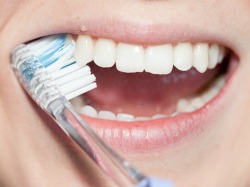
3. Start at the top right hand side of your mouth, on the outside of your teeth.
4. Place the brush at 45 degree angle up into gum line with a little bit of pressure - your gum should blanch slightly. For top teeth angle up, and angle down for bottom teeth.
5. The brush should be moved in very small circular motions for around 3 to 5 seconds per tooth, then give the brush head a gentle flick down.
6. Move on to the next tooth and repeat.
7. Continue on the outside surface all the way around until you reach the back left.
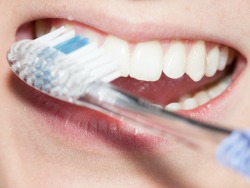
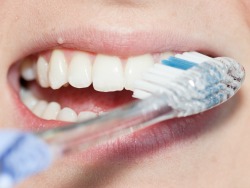
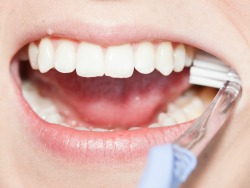
8. Then repeat the process from back left, moving around the inside surfaces of the teeth.
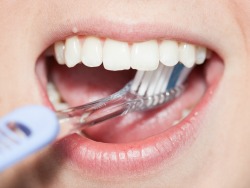 |
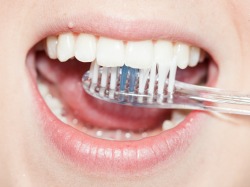 |
9. Once at the back right, move on to lower teeth and repeat process.
10. The lower front teeth can also be cleaned with the tooth brush held vertically and flicked up.
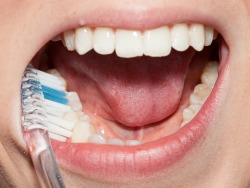
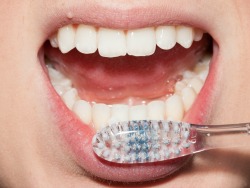
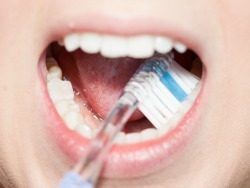
11. Finally, the ONLY time you should ‘scrub’ is when cleaning the biting surfaces.
12. Spit out but DO NOT rinse.
13. Your tongue can be brushed at this stage, starting at the back and moving the brush in downward motions to the tip of the tongue. This should be enough to remove bacterial deposits from its surface.
The whole process should take around 2-3 minutes.
Let me show you how to brush your teeth properly
Good brushing technique is absolutely key to good oral health. On your next hygiene appointment I'll show you the perfect teeth brushing routine, check that what you're doing is right for your teeth and gums and will advise you on any further oral care you need to keep your whole mouth in tip top condition.
